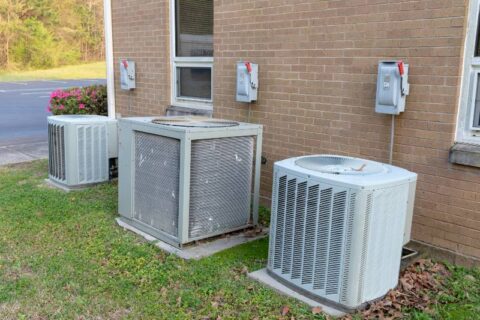7 Fall Plumbing Tips
It’s important to keep an eye on your plumbing all year round, but now is the perfect time to perform fall plumbing maintenance because temperatures are dropping as winter approaches. Dropping temperatures mean freezing water, which can wreak havoc on your plumbing system if you’re not ready. Follow this fall plumbing checklist to prepare your pipes for winter weather.
- Insulate exposed pipes: Winter is the prime time for frozen and burst pipes, especially in Utah, where frigid overnight temperatures are the norm. Insulating pipes in the attic, garage, and crawlspace is an important fall plumbing tip to help you avoid the cost and mess of burst pipes.
- Look for pipe corrosion or leaks: Old pipes can rust from the inside out, eventually developing leaks if left unaddressed. Look for green, yellow, or orange stains on pipe fittings as indicators of corrosion. Then, check exposed pipes for puddles, water stains, or other signs of leaks requiring immediate repair.
- Inspect your sewer: If you have had sewer problems in the past, inspect and snake the line this fall to avoid any possible smelly, messy backups during the winter.
- Flush the water heater: This appliance works hardest in the winter. To help it perform at its peak and prolong its life, flush a few gallons from the drain valve located near the bottom of the tank. Continue emptying the sediment-filled water into a bucket until the water runs clear.
- Test the temperature/pressure relief valve: The TPR valve must function correctly for the water heater to safely vent excessive pressure in an emergency. To test this, first don protective gloves to avoid contact with scalding-hot water. Then, lift the TPR valve. A burst of hot water should flow out, and the valve should snap back into place. If you have to force the valve closed, call a plumber right away to have it replaced.
- Disconnect and store garden hoses: Once you’ve finished lawn care for the season, coil up the garden hoses in the shed or garage. If you leave them connected to outdoor faucets, water could freeze and expand, potentially causing interior connecting pipes to break and leak water into your home.
- Drain or cover outdoor faucets: Many homes are equipped with indoor shut-off valves connected to the outdoor faucets. Find and close these valves. Then, open the exterior faucets to drain any residual water. If your home doesn’t have this feature, insulate your outdoor faucets with specially made foam covers, or wrap them with towels and duct tape for protection from cold temperatures.
If you need help performing these fall plumbing tips, or you find issues requiring a professional’s expertise, turn to Parley’s PPM Plumbing, Heating & Cooling. We have over 40 years of experience helping homeowners prepare their plumbing systems for cold weather. To schedule services, please call 801-226-3033 if you live in Utah County, or reach us at 801-229-2665 if you’re a Salt Lake County resident. You can also contact us online with any questions you have.


